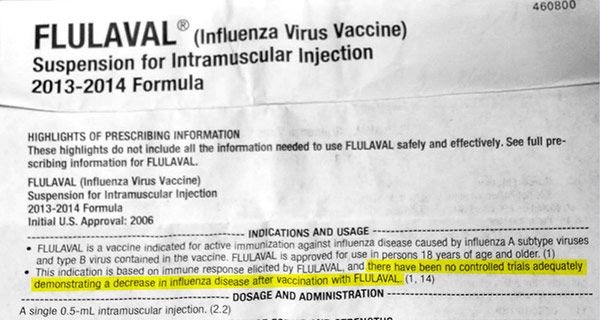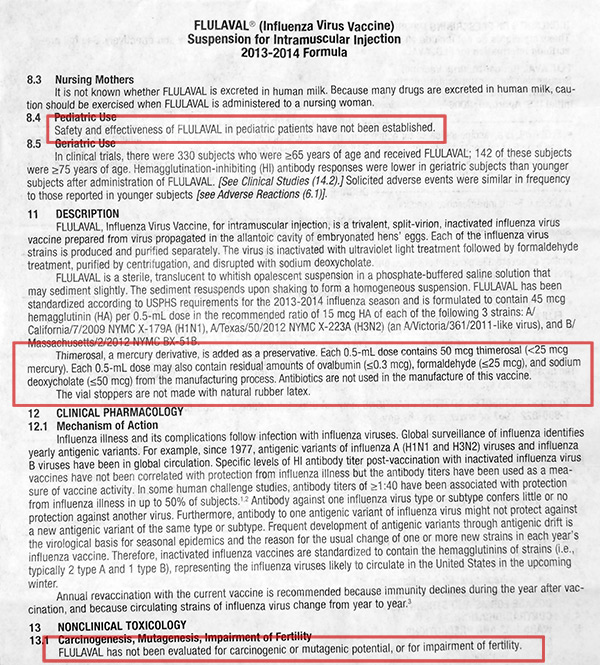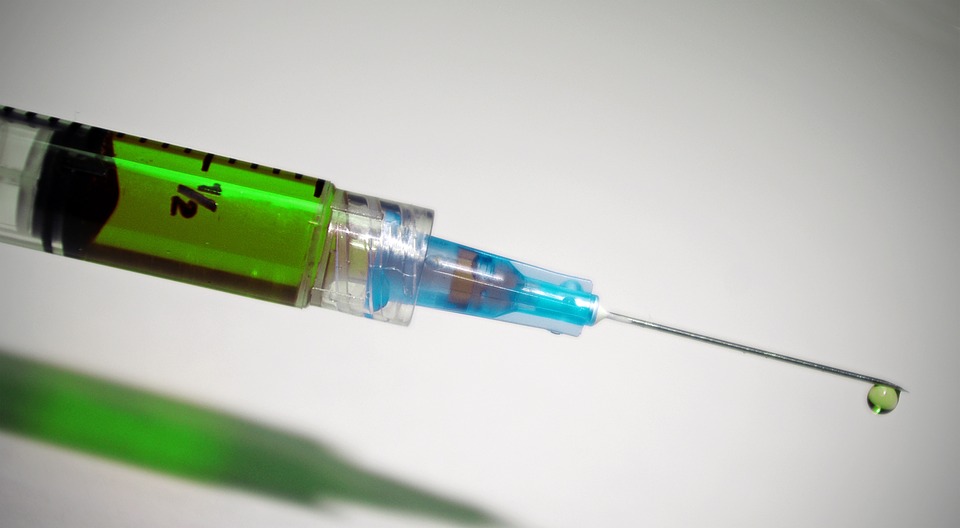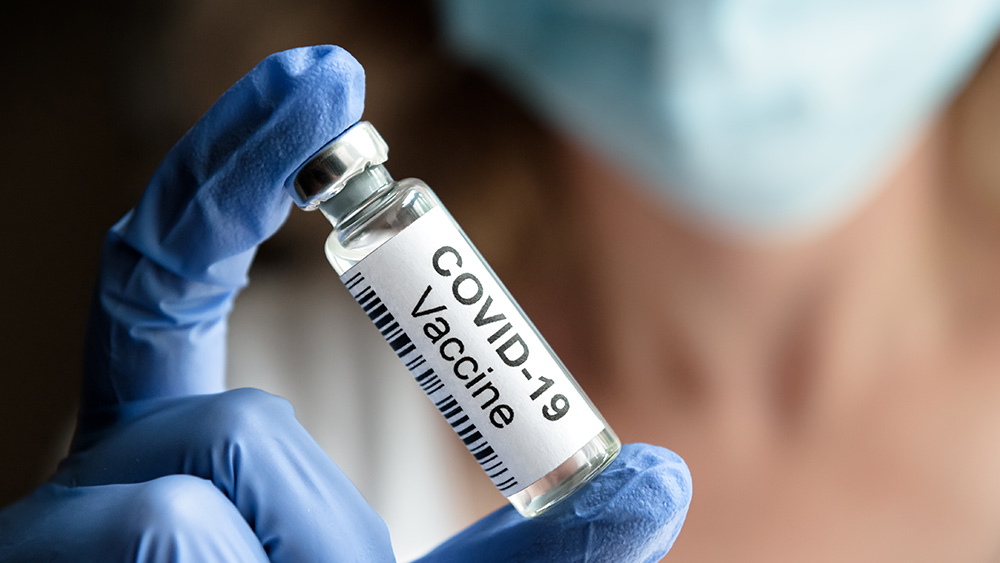CDC admits last year’s flu shot was one of the most ineffective vaccines to date
01/20/2016 / By Greg White

Flu shots have proven to be less and less effective in the wake of the past few flu seasons. In a stunning feat of acknowledgment, the Centers for Disease Control and Prevention (CDC) recently admitted that the 2014–15 flu vaccine was no better, setting record lows for effectiveness.
The organization has admitted that the 2014–2015 flu shot reduced the risk of getting the flu by a mere 23 percent. Meanwhile, the mainstream media has continued to cast anyone who dare question the efficacy of vaccines to the lunatic fringe.(1)
This year’s vaccine no better than last year’s
The results – published in the Morbidity and Mortality Weekly Report – reviewed 2,321 children and adults with acute respiratory illness. Among the patients, approximately 950 (41%) had the influenza virus, with 916 (96%) testing positive for influenza A – all of which were H3N2 viruses – and 35 (4%) testing positive for influenza B. The 2014-15 flu vaccine had been administered to 49% of patients with influenza and 56% of patients who did not have the virus.(1)
The H3N2 is one of the most common strains of the virus that the CDC detects and issues vaccines for. Thus far, this year’s H3N2 isn’t shaping up to be any different from its predecessor, meaning this year’s vaccine will likely be just as ineffective as last year’s.
“H3N2 viruses tend to mutate faster than the other influenza virus types [and] years where H3N2 dominate tend to have more cases of hospitalizations,” Michael L. Jackson, an associate scientific investigator at Group Health Research Institute in Seattle, told sources.
Despite the failure of last year’s flu shots, the CDC is predictably urging the masses to get vaccinated in preparation for this year’s flu season. Nevertheless, you don’t need to reference studies issued by the CDC – which are subject to funding bias and littered with conflicts of interest – to recognize flu vaccines are useless. All you have to do is look on the back of a flu vaccine box.
‘Safety and effectiveness not established’
Read the wording in the following photo of the FLULAVAL vaccine insert below, which was administered for the 2013-14 flu season. It states:
FLULAVAL is a vaccine indicated for active immunization against influenza disease… but doesn’t state if the vaccine works.
In the next bullet point, the vaccine insert acknowledges:
… there have been no controlled trials adequately demonstrating a decrease in influenza disease after vaccination with FLULAVAL.

In other words, GlaxoSmithKline – the pharmaceutical manufacturer that provides the vaccine – has openly admitted that there is no evidence to vindicate this flu shot.
But that’s not all. If you continue to read the FLULAVAL insert, it says in black and white text, Safety and effectiveness of FLULAVAL in pediatric patients have not been established.(3)
The same insert also reads, FLULAVAL has not been evaluated for carcinogenic or mutagenic potential, or for impairment of fertility.(3)

As you can also see, the same insert notes that when you’re injected with a flu shot, you’re also being injected with a cocktail of mercury, formaldehyde and other toxic ingredients:
Thimerosal, a mercury derivative, is added as a preservative. Each … dose contains 50 mcg thimerosal. Each dose may also contain residual amounts of ovalbumin, formaldehyde, and sodium deoxycholate from the manufacturing process.
Given these toxic chemicals, its no wonder that the adverse side effects of vaccines include convulsions, seizures, partial facial paralysis and brain swellings, to name just a few.(3)
In short: flu shots have proven to be at least ineffective, and at most, dangerous. Don’t expect this year’s flu shot to be any different.
Source include:
(3) NaturalNews.com
Submit a correction >>
Tagged Under:
CDC, flu shot, hoax
This article may contain statements that reflect the opinion of the author
RECENT NEWS & ARTICLES
Vaccines.News is a fact-based public education website published by Vaccines News Features, LLC.
All content copyright © 2018 by Vaccines News Features, LLC.
Contact Us with Tips or Corrections
All trademarks, registered trademarks and servicemarks mentioned on this site are the property of their respective owners.





















